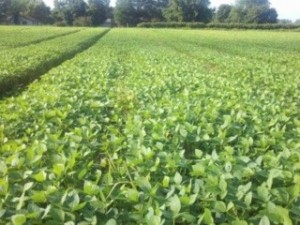Hello,I hope you had a nice Thanksgiving holiday with family and friends. Harvest is nearing completion and with the cooler temperatures comes winter meetings and banquets. The Agriculture Hall of Fame Banquet will take place this Tuesday, December 3, starting at 6:30 pm at St. John’s United Church of Christ in Kenton. There are several opportunities coming up for learning new things to help your business grow and become more efficient.The Cattle Producers are meeting Wednesday, December 4, starting at 7:30 pm in the Allmax Technology Building. They will be discussing weigh-ins and committee assignments. The next Ag Council meeting is scheduled for Friday, December 6, starting at 7:00 am at Henry’s Restaurant in Kenton. Feel free to join us for breakfast in the banquet room and a short program with Kent Jorgensen from Wright Law Firm giving an overview of Ag Law. The Hardin County Agricultural Society (Fairboard) will meet Saturday, December 7, starting at 7:30 pm at the Fair Office for it’s monthly meeting. The Dairy Service Unit Directors are meeting Monday, December 9 at 7:00 pm in the Fair Office. They will be discussing activities for 2014 including the banquet and the annual meeting.
Modified Relay Intercropping – Lessons from 15 Years of Field Trials – Steve Prochaska – OSU Extension Agronomy Field Specialist
Modified Relay Intercropping (MRI) is the planting of soybeans into headed wheat that may occur up to 7 weeks prior to wheat harvest. MRI is system where two crops, wheat and soybeans can be harvested in the same growing season. In 2013 in the MRI system, soybeans averaged 54 bushels/acre and wheat 70 bushels per acre over 12 different small plot field trials (randomized complete block, 4 replications). This year, soybeans were above the long term average MRI yield and wheat below the long term MRI average yield (soybeans 30 bushel/acre; wheat 76 bushel per acre). To continue reading this article, go to http://corn.osu.edu/newsletters/2013/2013-38/modified-relay-intercropping-2013-lessons-from-15-years-of-field-trials.
Grazing Corn Residue – Rory Lewandowski, OSU Extension Educator Wayne County
A lot of acres of corn has been harvested over the past several weeks. For every bushel of corn harvested by the combine, between 14 to 16 pounds of corn residue dry matter is left in the field. Graziers need to view that residue as a resource opportunity. That remaining corn residue is composed of corn grain, cob, husks, leaves, and stalks, all of it with some nutritional value. Corn residue, when grazed during a mid-October through December time frame is a suitable feedstuff for most classes of ruminant livestock. The exceptions are livestock in a late gestation or lactation stage of production. In addition to using a low cost feedstuff, grazing corn residue removes animals from grass pastures during the late fall period. This can benefit pastures, insuring that they are not overgrazed before they go dormant. Grazing corn residues can help to stretch stockpiled forages so that they are not used until later in the year. To continue reading this and other beef articles, go to http://beef.osu.edu/beef/beefNov2713.html.
2013 Ohio Soybean Performance Trials Available – Laura Lindsey – OSU Soybeans and Small Grains – Harold Watters, CPAg/CCA, OSU Extension Field Agronomist
The Ohio Soybean Performance Trials are published by J.D. Bethel, Chris D. Kroon Van Diest, John McCormick, and Dr. Laura Lindsey of the Department of Horticulture and Crop Science, Ohio State University Extension/Ohio Agricultural Research and Development Center. The purpose of the Ohio Soybean Performance Trials is to evaluate soybean varieties for yield and other agronomic characteristics. This evaluation gives soybean producers comparative information for selecting the best varieties for their unique production systems. To continue reading this article and find a link to the 2013 Ohio Soybean Performance Trials, go to http://corn.osu.edu/newsletters/2013/2013-39/2013-ohio-soybean-performance-trials.
Porcine Epidemic Diarrhea (PED) is a viral disease caused by a member of the family Coronaviridae. Although clinically similar to transmissible gastroenteritis (TGE), the virus is unrelated to TGE. Prior vaccination for TGE (or, presumably, prior exposure to TGE or respiratory coronavirus) does not infer protection against PEDV. Introduction of PED virus into a naïve herd typically results in acute outbreaks of severe diarrhea, vomiting, high morbidity (often 100%) and variable mortality (some reports as high as 100% in young pigs). The incubation period is short (2 – 4 days) and natural immunity develops over two to three weeks, resulting in colostral protection for neonatal piglets. The virus spreads via the fecal- oral route and fomites. For more information, see the attached pdf file and go to http://www.pork.org/FileLibrary/PORKFileLibrary16/PEDVUpdate9-20-2013.pdf.
2013 Forage Production School – Dr. Bill Weiss, Professor and Extension Dairy Specialist, Department of Animal Sciences, The Ohio State University
Ohio State University Extension will be presenting a workshop on forage production and utilization this coming January and February. The course is geared toward both forage and livestock producers (with an emphasis on dairy cattle). The course will consist of 2 hours of class time on January 30, February 4, and February 11, 2014. The classes will start promptly at 12:45 pm and conclude at 3:30 pm each of the 3 days. The course will be offered in Ashtabula, Darke (in combination with Auglaize), Licking, Mahoning, Morrow, and Wayne counties via interactive video feeds and real in-person speakers. Forage production topics include updates on forage genetics, forage fertilization and optimal manure utilization, weed control, double cropping systems, and precision agricultural technologies. Forage utilization topics include forage quality evaluation, control of shrink, forage inventory management, production economics, and an update on corn silage production and use. To find out more information about this and other dairy cattle topics, go to http://dairy.osu.edu/bdnews/Volume%2015%20issue%206%20file/Volume%2015%20Issue%206.html#Forage.
OSU Extension Hardin County
1021 W. Lima Street, Suite 103, Kenton, OH 43326
419-674-2297 Office




